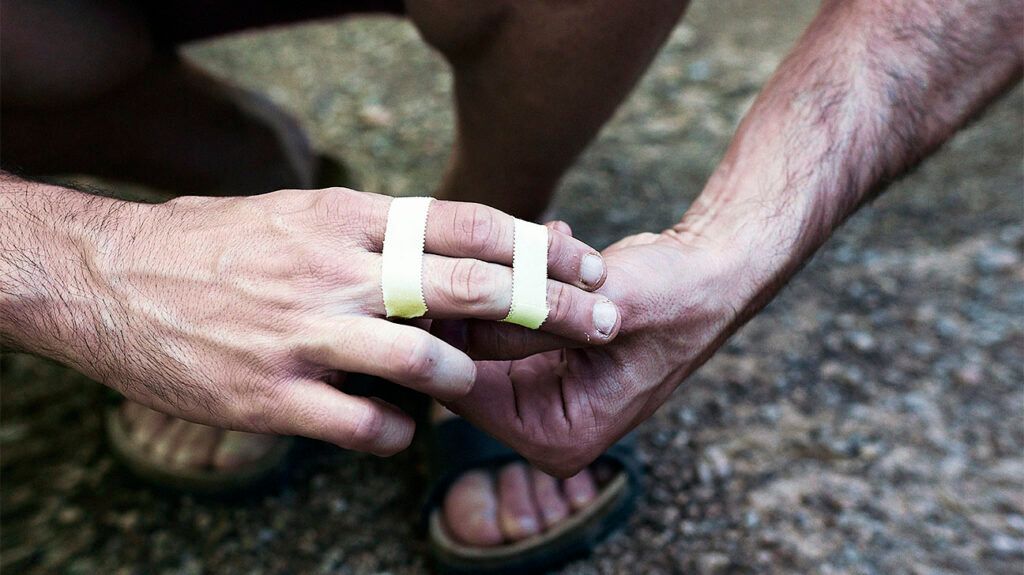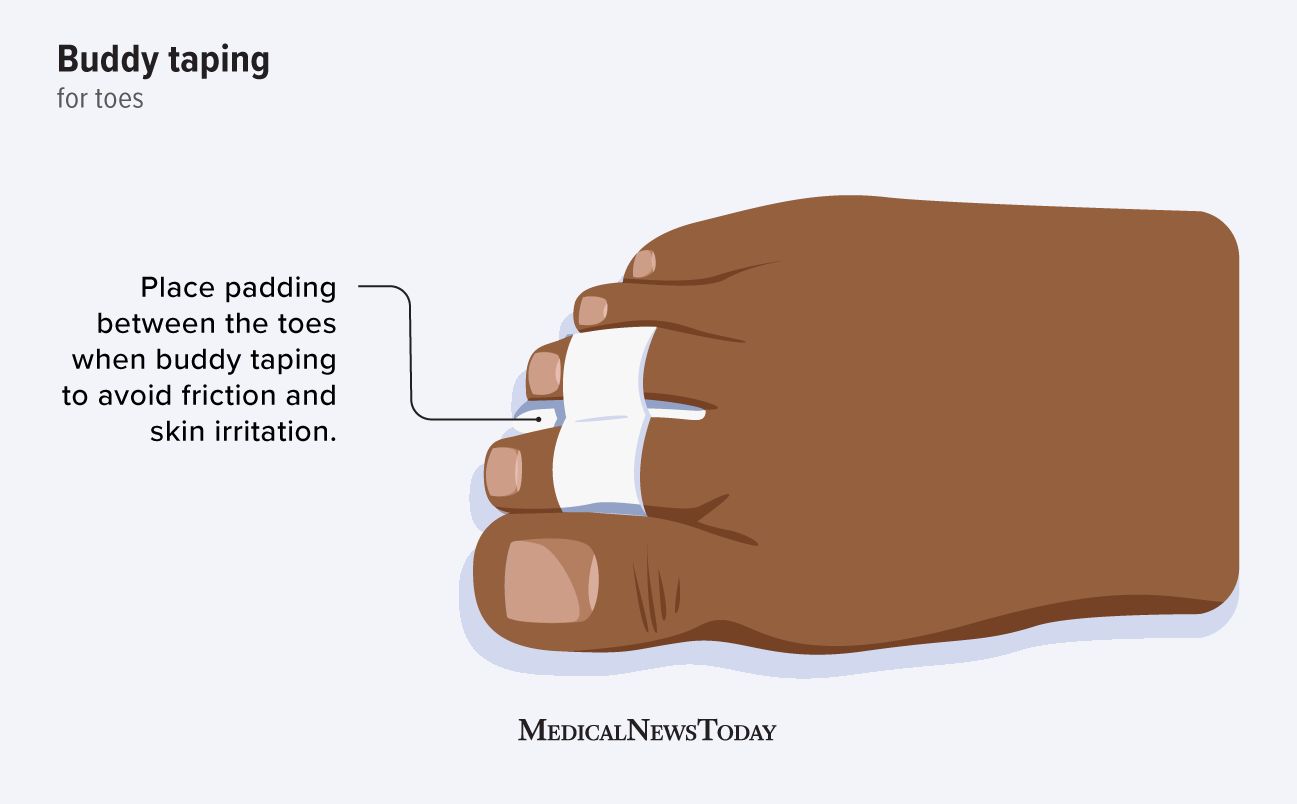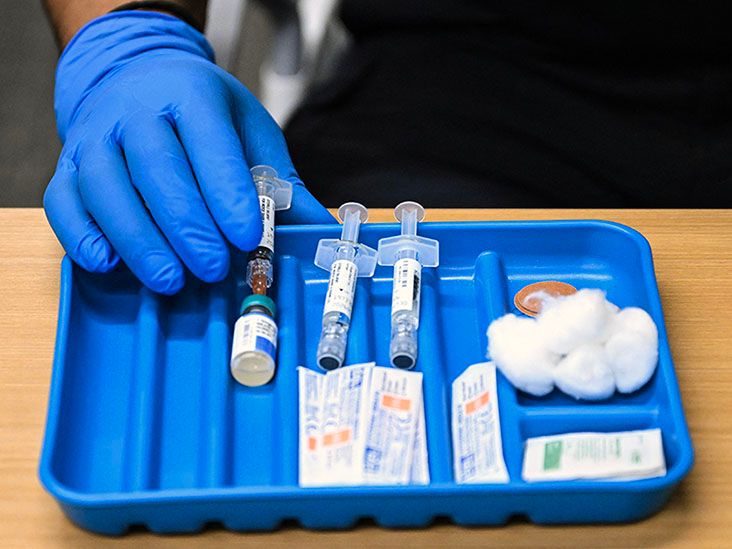Buddy taping is the practice of treating an injured finger or toe by taping it to an uninjured digit next to it. This acts as a splint, limiting the injured digit’s movement and keeping it straight while it heals.
Buddy taping can help treat minor injuries to the fingers and toes, such as sprains and minor fractures. It can help align, protect, and support an injured digit while it heals.
People can try this basic first aid method at home, but if there is an open wound or an obvious deformity, a person should speak with a doctor or visit their nearest urgent care center.

Before buddy taping, examine the injured digit. If the digit is severely swollen or abnormally bent, seek medical help, as buddy taping may worsen the injury.
Supplies
If people do not have the following supplies at home, they can find them in a pharmacy or large grocery store:
- soft padding, such as cotton or gauze, to reduce skin-on-skin friction between the digits
- adhesive tape, such as surgical tape or zinc oxide tape
- scissors
How to do buddy taping
Although a person may be able to buddy tape their own digits, it may be easier if someone else does it for them, particularly for an injured finger.
- Cut the padding to size and insert it between the injured digit and the uninjured digit. It should not be so thick that it pushes the digits apart. Ensure that any folds in the padding are not touching the skin between the digits.
- Fingers: The fingers have three knuckles — one at the base, one in the middle, and one near the tip. When buddy taping fingers, wrap the tape around the fingers between the middle and top knuckles. Wrap another length of tape between the base of the fingers and the middle knuckle. Avoid wrapping tape around the knuckles.
- Toes: When buddy taping toes, Apply one length of tape around the injured and uninjured toes.
- Check that the tape is not too tight by:
- elevating the hand or foot
- pressing on the nail for a few seconds to squeeze blood out of the nailbed tissues
- releasing and counting how long it takes for the nail to return to its usual color; if it takes
longer than 3 secondsTrusted Source , the tape may be too tight, and a person should start over
Tips for buddy taping
- Reduce the width of the tape to avoid it extending over the tips of the digits.
- Change the tape after bathing or showering, and ensure digits are clean and dry before applying fresh tape.
- Change the tape if it becomes wet to avoid irritating the skin.
- Try angling the tape when taping a shorter digit to a longer one.
- Remove the tape if there is numbness, pain, or a change in skin color. The tape may be too tight.


Buddy taping is not essential for treating an injured digit, but it can protect and support it while it heals. If a weakened digit sustains another injury while unprotected, it may require further treatment and take longer to heal.
Sometimes, doctors use a splint to immobilize a digit. However, a study comparing splinting with buddy taping to treat children’s finger fractures found the methods were equally effective.
Buddy taping may cause further problems, such as:
- skin irritation due to friction or the tape staying wet against the skin for too long
- reduced circulation if the tape is wound too tightly
- worsening of a fracture that is not suitable for buddy taping
Buddy taping is not safe in the following situations:
- There is an open wound on the finger or toe.
- The finger or toe is bent unusually, or it crosses over the adjacent digit.
- The finger or toe is severely swollen or painful.
- A person experiences numbness or tingling in the injured digit.
The American Academy of Orthopaedic Surgeons recommends consulting a doctor if a digit may have sustained a fracture. A doctor may order X-rays to understand the nature of the fracture and how to treat it. They will also look for other, less obvious injuries that may require treatment.
A doctor may recommend buddy taping or using a splint to immobilize the injured digit. For severe fractures, surgery may be necessary to realign the bones.
People can use the following first-aid treatments following a finger or toe injury:
- Elevate the affected hand or foot to reduce swelling.
- Avoid using or putting pressure on the injured digit.
- Apply a cold pack or ice pack for 10 to 15 minutes to reduce swelling.
- Take over-the-counter pain medications, such as acetaminophen, if necessary.
Soft tissue injuries, such as sprains, may take around 6 weeks to heal. However, injuries heal at different rates, so some people may be back to normal in 2 weeks, while others may take 3 months to heal.
After the first 72 hours following a soft tissue injury, it is important to try moving the injured digit without straining it and causing more damage. Gently stretching and bending the injured digit can help improve function, strength, and flexibility.
Healing time for fractures depends on the type of fracture and a person’s general health, but it is generally around 6 to 8 weeks.
Learn more about a sprained finger.
Buddy taping is a way of treating a minor finger or toe injury by attaching the injured digit to an adjacent one for support. People can try this at home using tape and gauze from a pharmacy.
If a digit is severely swollen, deformed, or painful, the injury may be more serious, and it is best to speak with a doctor. The doctor may recommend X-rays before deciding how to treat the injury.
People should try to avoid winding tape too tightly around the digits, as this could reduce circulation. It is also important to change the tape regularly and avoid wetness or friction that may irritate the skin.


